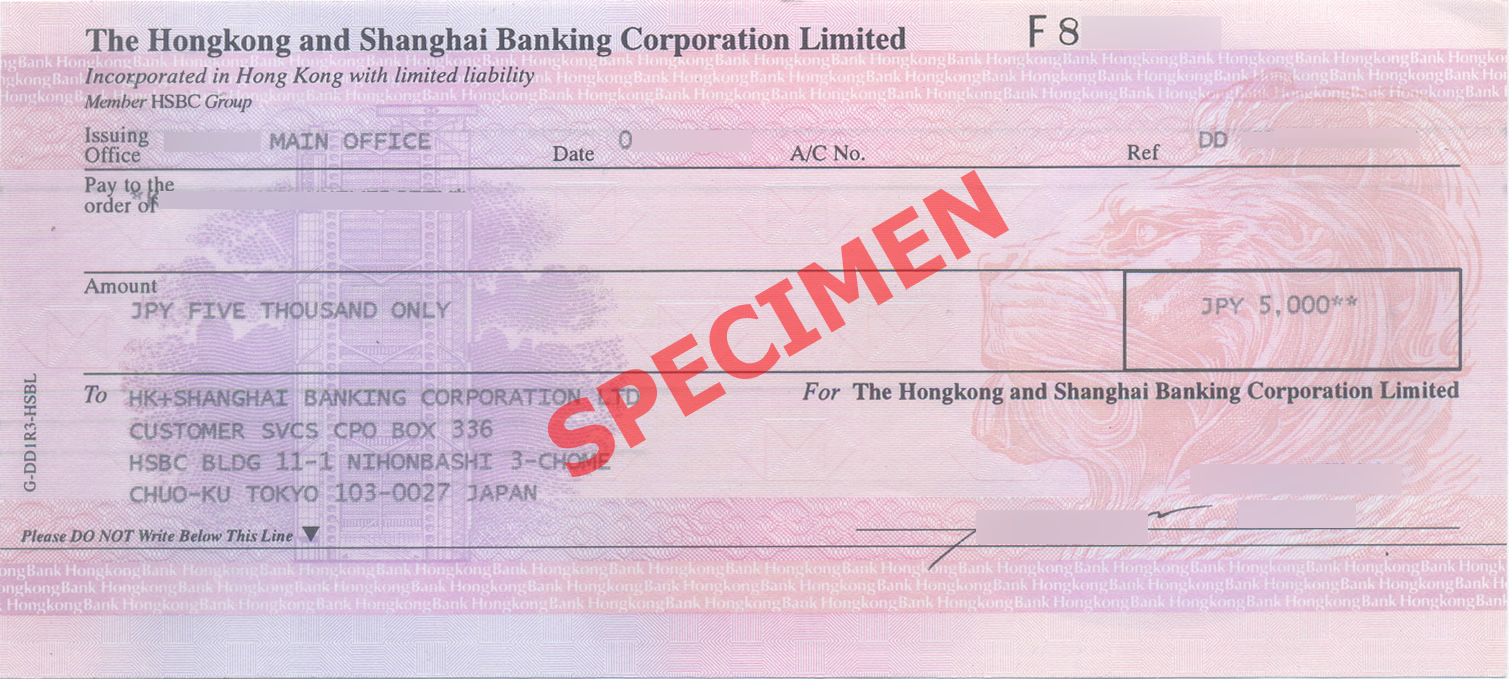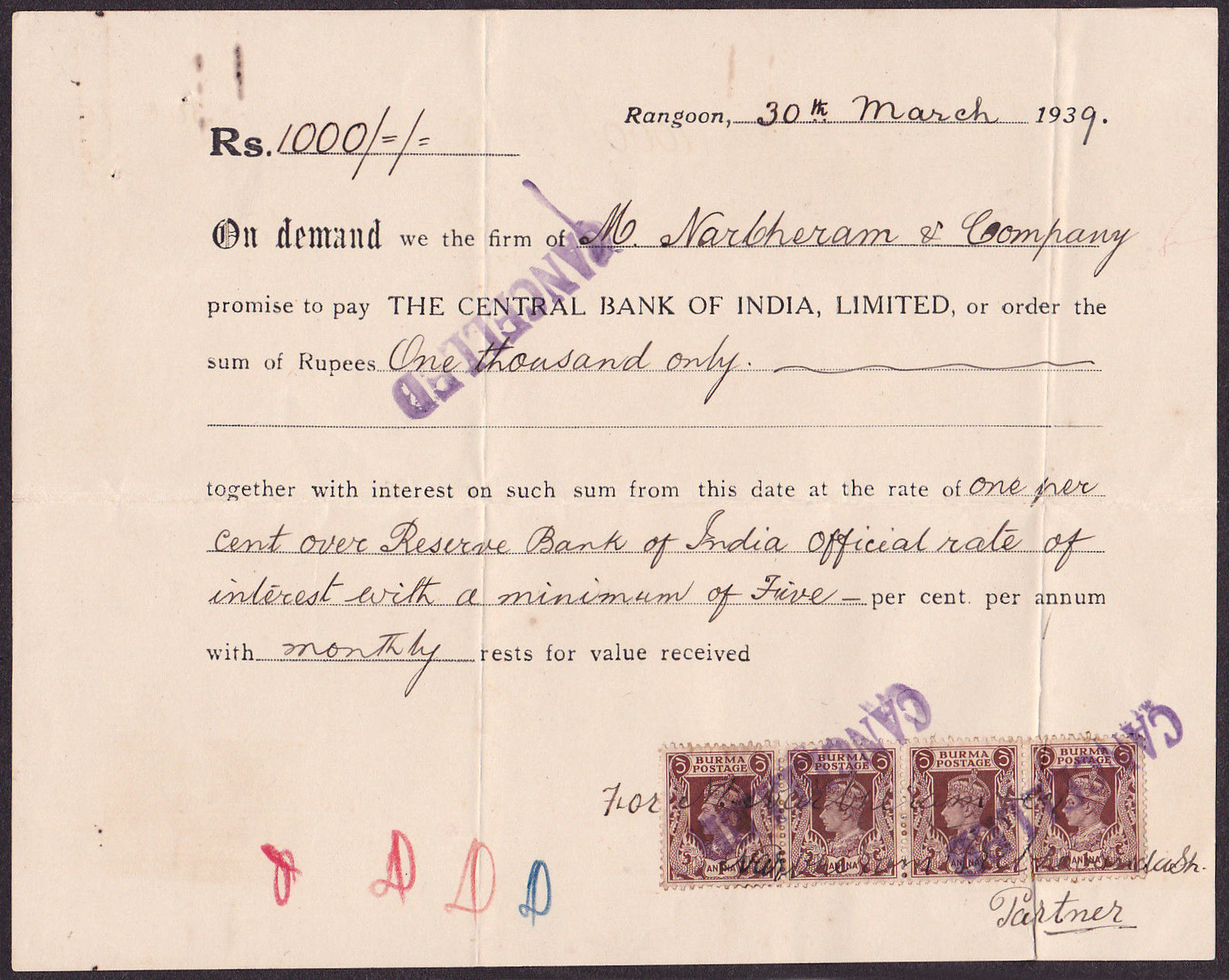|
Demand Draft
A demand draft (DD) is a negotiable instrument similar to a bill of exchange. A bank issues a demand draft to a client (drawer), directing another bank (drawee) or one of its own branches to pay a certain sum to the specified party (payee). A demand draft can also be compared to a cheque. However, demand drafts are difficult to countermand or revoke. Cheques can also be made payable to the bearer. However, demand drafts can only be made payable to a specified party, also known as pay-to-order. Demand drafts are usually orders of payment by a bank to another bank, whereas cheques are orders of payment from an account holder to the bank. A Drawer has to visit the branch of the Bank and fill the demand draft form and pay the amount either by cash or any other mode, and Bank will issue a demand draft. A demand draft has a validity of three months from the date of issuance of the demand draft. For instance, when enrolling in a college, an admission fee is required which can be paid t ... [...More Info...] [...Related Items...] OR: [Wikipedia] [Google] [Baidu] |
Negotiable Instrument
A negotiable instrument is a document guaranteeing the payment of a specific amount of money, either on demand, or at a set time, whose payer is usually named on the document. More specifically, it is a document contemplated by or consisting of a contract, which promises the payment of money without condition, which may be paid either on demand or at a future date. The term has different meanings, depending on its use in the application of different laws and depending on countries and contexts. The word "negotiable" refers to transferability, and " instrument" refers to a document giving legal effect by the virtue of the law. Concept of negotiability William Searle Holdsworth defines the concept of negotiability as follows: #Negotiable instruments are transferable under the following circumstances: they are transferable by delivery where they are made payable to the bearer, they are transferable by delivery and endorsement where they are made payable to order. #Consideration is p ... [...More Info...] [...Related Items...] OR: [Wikipedia] [Google] [Baidu] |
Cheque
A cheque (or check in American English) is a document that orders a bank, building society, or credit union, to pay a specific amount of money from a person's account to the person in whose name the cheque has been issued. The person writing the cheque, known as the ''drawer'', has a transaction banking account (often called a current, cheque, chequing, checking, or share draft account) where the money is held. The drawer writes various details including the monetary amount, date, and a payee on the cheque, and signs it, ordering their bank, known as the ''drawee'', to pay the amount of money stated to the payee. Although forms of cheques have been in use since ancient times and at least since the 9th century, they became a highly popular non-cash method for making payments during the 20th century and usage of cheques peaked. By the second half of the 20th century, as cheque processing became automated, billions of cheques were issued annually; these volumes peaked in or a ... [...More Info...] [...Related Items...] OR: [Wikipedia] [Google] [Baidu] |
Uniform Commercial Code
The Uniform Commercial Code (UCC), first published in 1952, is one of a number of uniform acts that have been established as law with the goal of harmonizing the laws of sales and other commercial transactions across the United States through UCC adoption by all 50 states, the District of Columbia, and the Territories of the United States. While largely successful at achieving this ambitious goal, some U.S. jurisdictions (''e.g.'', Louisiana and Puerto Rico) have not adopted all of the articles contained in the UCC, while other U.S. jurisdictions (''e.g.'', American Samoa) have not adopted any articles in the UCC. Also, adoption of the UCC often varies from one U.S. jurisdiction to another. Sometimes this variation is due to alternative language found in the official UCC itself. At other times, adoption of revisions to the official UCC contributes to further variation. Additionally, some jurisdictions deviate from the official UCC by tailoring the language to meet their unique ... [...More Info...] [...Related Items...] OR: [Wikipedia] [Google] [Baidu] |
Legal Information Institute
The Legal Information Institute (LII) is a non-profit public service of Cornell Law School that provides no-cost access to current American and international legal research sources online. Founded in 1992 by Peter Martin and Tom Bruce, LII was the first law site developed on the internet. LII electronically publishes on the Web the U.S. Code, U.S. Supreme Court opinions, Uniform Commercial Code, the US Code of Federal Regulations, several Federal Rules, and a variety of other American primary law materials.. LII also provides access to other national and international sources, such as treaties and United Nations materials. According to its website, the LII serves over 40 million unique visitors per year. Since its inception, the Legal Information Institute has inspired others around the world to develop namesake operations. These services are part of the Free Access to Law Movement. History LII was established in 1992 at Cornell Law School by Peter Martin and Tom ... [...More Info...] [...Related Items...] OR: [Wikipedia] [Google] [Baidu] |
Remotely Created Cheque
In the United States, remotely created checks (also called a demand draft, a tele-check, check by phone, check by fax, or e-check) are orders of payment created by the payee using a telephone or the Internet. Remotely created checks are orders of payment created by the payee and authorized by the customer remotely, using a telephone or the Internet by providing the required information including the MICR code from a valid check. They do not bear the signatures of the customers like ordinary checks. Instead, they bear a legend statement "Authorized by Drawer". This type of instrument is usually used by credit card companies, utility companies, or telemarketers. Remotely created checks are vulnerable to fraud.Shonk, Krista J. November 9, 2005.America's Community Bankers. federalreserve.gov. Retrieved on July 11, 2007. Use Demand drafts are frequently used to purchase items over the phone, from telemarketers. The checks also allow consumers to pay monthly bills by having them de ... [...More Info...] [...Related Items...] OR: [Wikipedia] [Google] [Baidu] |
Magnetic Ink Character Recognition
Magnetic ink character recognition code, known in short as MICR code, is a character recognition technology used mainly by the banking industry to streamline the processing and clearance of cheques and other documents. MICR encoding, called the ''MICR line'', is at the bottom of cheques and other vouchers and typically includes the document-type indicator, bank code, bank account number, cheque number, cheque amount (usually added after a cheque is presented for payment), and a control indicator. The format for the bank code and bank account number is country-specific. The technology allows MICR readers to scan and read the information directly into a data-collection device. Unlike barcode and similar technologies, MICR characters can be read easily by humans. MICR encoded documents can be processed much faster and more accurately than conventional OCR encoded documents. Pre-Unicode standard representation The ISO standard ISO 2033:1983, and the corresponding Japanese In ... [...More Info...] [...Related Items...] OR: [Wikipedia] [Google] [Baidu] |
Cashier's Check
A cashier's check (or cashier's cheque, cashier's order, official check; in Canada, the term ''bank draft'' is used, not to be confused with Banker%27s draft as used in the United States) is a check guaranteed by a bank, drawn on the bank's own funds and signed by a bank employee. Cashier's checks are treated as guaranteed funds because the bank, rather than the purchaser, is both the drawee and drawer and is responsible for paying the amount. They are commonly required for real estate and brokerage transactions. Genuine cashier's checks deposited into a bank account are usually cleared the next day. The customer can request "next-day availability" when depositing a cashier's check in person, with a special deposit slip. When cashier's checks took weeks to clear the banks, they were often forged in fraud schemes. The recipient of the check would deposit it in their account and withdraw funds under next-day availability, assuming it was legitimate. The bank might not be informed t ... [...More Info...] [...Related Items...] OR: [Wikipedia] [Google] [Baidu] |
Money Order
A money order is a directive to pay a pre-specified amount of money from prepaid funds, making it a more trusted method of payment than a cheque. History Systems similar to modern money orders can be traced back centuries. Paper documents known as "flying cash" were used in China from the 800s, while the Hawala practice of informal financial remittances through a widespread system of brokers can be traced to India in the 1300s and remains common in parts of Asia and Africa. The modern western money order system was established by a private firm in Great Britain in 1762, though due to high costs was not very successful. Around 1836 it was sold to another private firm which lowered the fees, significantly increasing the popularity and usage of the system. The Post Office (United Kingdom), Post Office noted the success and profitability, and it took over the system in 1838. Fees were further reduced and usage increased further, making the money order system reasonably profitable. T ... [...More Info...] [...Related Items...] OR: [Wikipedia] [Google] [Baidu] |
Traveler's Cheque
A traveller's cheque is a medium of exchange that can be used in place of the currency of a country. Each cheque is denominated in a preprinted fixed, round, amount of one of a number of major world currencies; it has two panels for a signature. The purchaser signs one panel of each cheque on receiving it; to use it, it is signed on the second panel and dated in the presence of the payee, who accepts it if the signatures match. It can then be deposited into a bank account in the same way as a normal cheque; payment was guaranteed if the signatures matched, even if a cheque had been used fraudulently, for example stolen, encouraging merchants to accept them routinely. While it was possible for the issuer to go out of business, invalidating cheques, most issuers were large, stable, businesses. Traveller's cheques were widely used from the 1850s to the 1990s by people travelling in foreign countries instead of cash, mainly before the introduction of payment cards and later elect ... [...More Info...] [...Related Items...] OR: [Wikipedia] [Google] [Baidu] |






